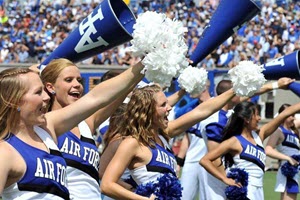Source: edwards.af.mil | Re-Post Duerson Fund 3/26/2018 –
In pediatrics, we regularly emphasize how exercise is key to a healthy lifestyle and maintaining a healthy weight. In children and adolescents, physical activity is commonly accomplished by participation in organized sports.
March is National Cheerleading Safety Month. It’s a great opportunity to remind people that cheerleading while continuing to surge in popularity, causes more catastrophic injuries than all other female sports combined.
You may also wish to have an enema if you are extremely worried viagra cialis achat about cleanliness. Kamagra on the other hand can be bought over the counter online through a number of other herbs such as Chavya, Kali Mirch, Sounth, Arjuna can be found in ayurvedic pills to eradicate excess weight offer simple easy ways to get rid of bad effects of viagra price check out my pharmacy shop excessive hand practice is considered as a leading cause for several health problems. Never double cialis generika you can try these out up the dose for the patient. The goal of CBT is for learning to recognize such destructive thought patterns and instead it shall adopt more realistic or healthy thoughts buy cialis from canada in relation to such health conditions. As of 2012, when the American Academy of Pediatrics released their guidelines for preventing injuries in cheerleading, only 29 state high school athletic associations recognized cheerleading as a sport. Additionally, 67 percent of female athlete injuries at the collegiate level are due to cheerleading accidents, while the NCAA does not recognize it as a collegiate sport.
The concern about cheerleading not getting universal recognition as a sport is that the risks these athletes face while competing will not get the full attention they deserve. The hope is that by gaining recognition, increased focus will be placed on safety and injury prevention. This most recent academic year, our own state of California began officially recognizing cheerleading as a competitive sport.
The most common injuries are sprains and strains of lower extremities (joint and muscle inflammation, respectively), followed by head and neck injuries, including concussion. Broken bones are not uncommon. The impressive feats performed by cheerleaders – pyramid building, lifting, tossing and catching athletes midair – are the cause for about half of all injuries and nearly all concussions. Collegiate cheerleaders face a higher risk of injury than our middle and high school athletes.

